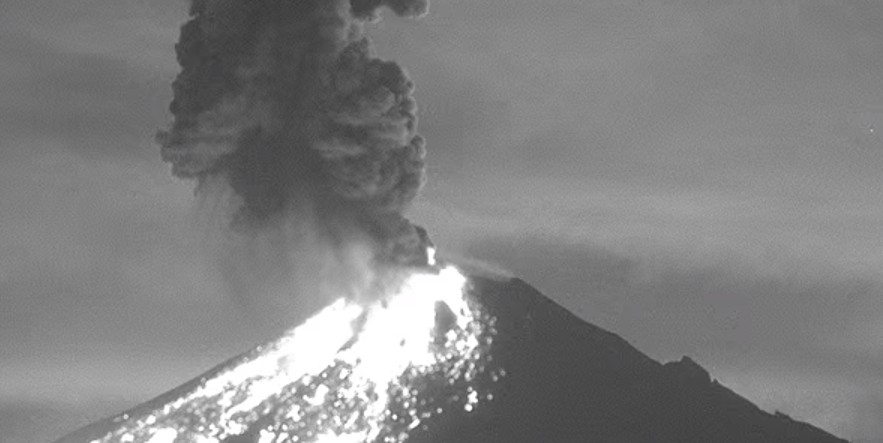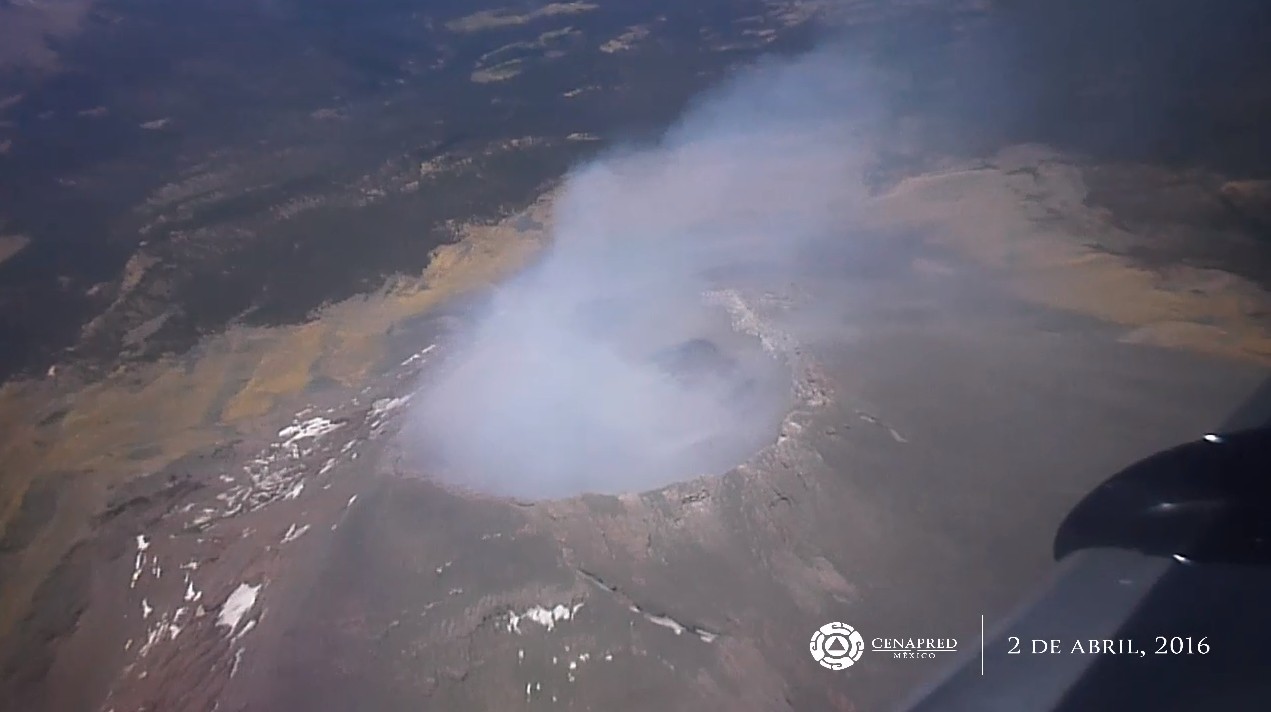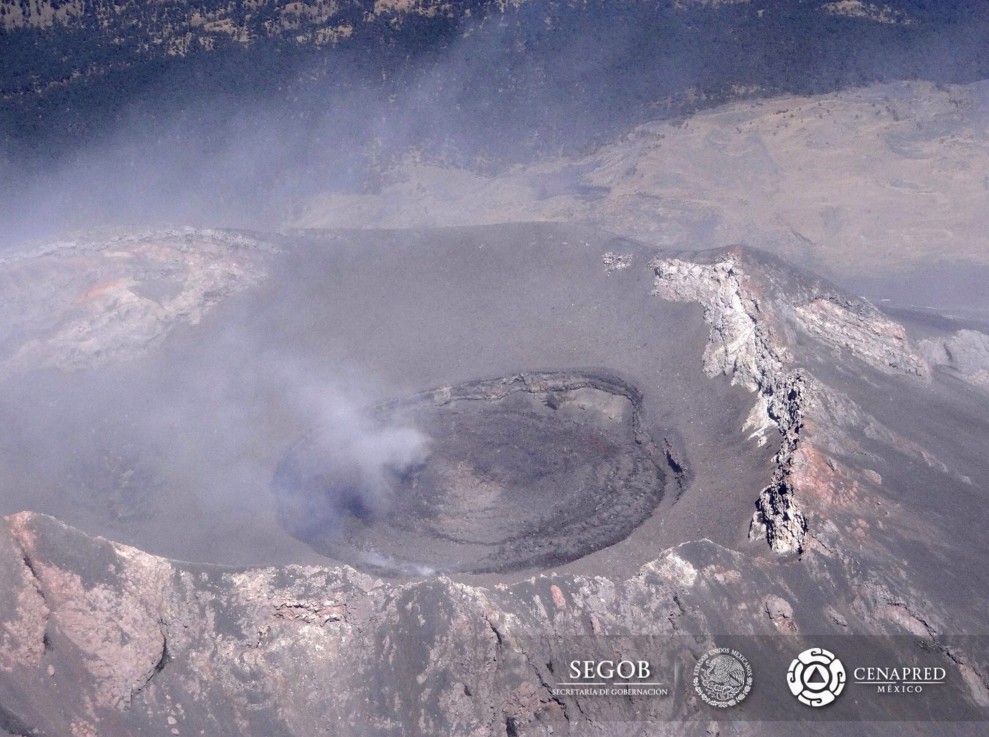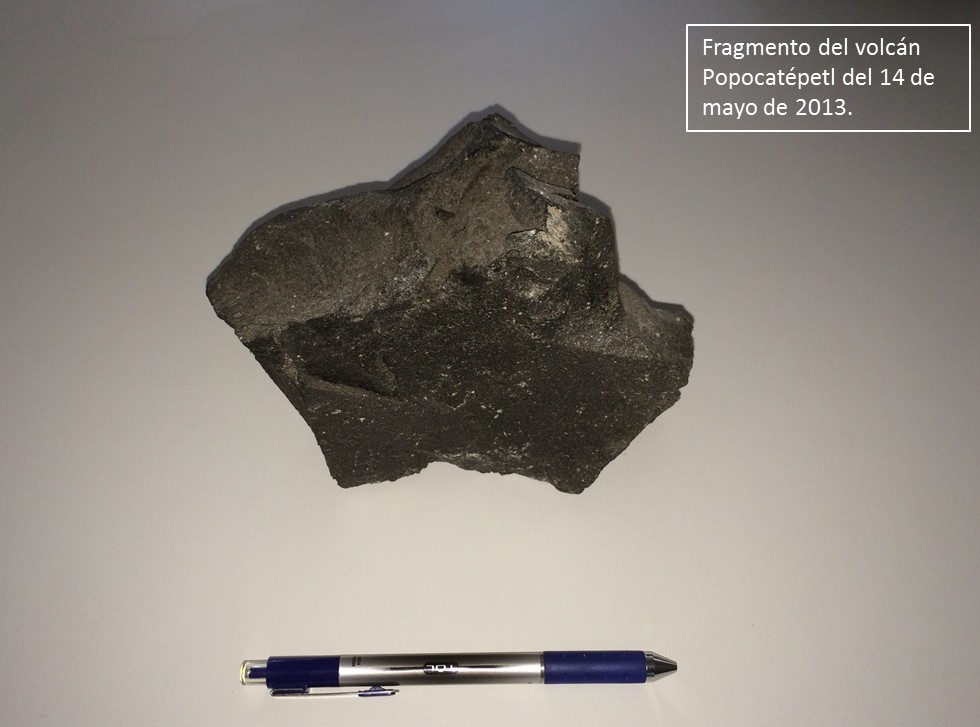Strong explosion at Popocatépetl volcano, Mexico

A strong explosion occurred at Mexico's Popocatépetl volcano at 01:31 UTC on April 4, 2016 (20:31 local time on April 3). The volcano, also known as the smoking mountain, is located 70 km (43 miles) SE of Mexico City and is known for its frequent explosions.
According to CENAPRED, the eruption produced an ash column that moved toward the northeast and reached an altitude of 7.4 km (24 300 feet). This is 2 km (6 561 feet) above the crater.
Incandescent fragments were observed landing up to 3.5 km (2.1 miles) on the east and southeast slopes and igniting fires. The eruption caused ashfall in the towns of Juan C. Bonilla and Coronango, both in the state of Puebla.

An overflight on April 2 (Video 1, Video 2) showed that the lava dome which had been growing since January, and lately contained up to 2 million cubic meters of lava, was destroyed during recent eruptions. A new inner crater, measuring approximately 50 meters (164 feet) deep and 325 meters (1 066 feet) wide, was observed in its place.


Popocatépetl overflight – April 2, 2016. Image credit: CENAPRED


Popocatépetl overflight – April 2, 2016. Image credit: CENAPRED
CENAPRED urges not to approach the volcano and especially the crater:


Geological summary
Volcán Popocatépetl, whose name is the Aztec word for smoking mountain, towers to 5426 m 70 km SE of Mexico City to form North America's 2nd-highest volcano. The glacier-clad stratovolcano contains a steep-walled, 400 x 600 m wide crater. The generally symmetrical volcano is modified by the sharp-peaked Ventorrillo on the NW, a remnant of an earlier volcano. At least three previous major cones were destroyed by gravitational failure during the Pleistocene, producing massive debris-avalanche deposits covering broad areas to the south. The modern volcano was constructed south of the late-Pleistocene to Holocene El Fraile cone.
Three major plinian eruptions, the most recent of which took place about 800 CE, have occurred from Popocatépetl since the mid Holocene, accompanied by pyroclastic flows and voluminous lahars that swept basins below the volcano. Frequent historical eruptions, first recorded in Aztec codices, have occurred since precolumbian time. (GVP)
Feature image: Popocatépetl eruption on 01:31 UTC on March 4, 2016. Credit: WebCamsDeMexico

Commenting rules and guidelines
We value the thoughts and opinions of our readers and welcome healthy discussions on our website. In order to maintain a respectful and positive community, we ask that all commenters follow these rules:
We reserve the right to remove any comments that violate these rules. By commenting on our website, you agree to abide by these guidelines. Thank you for helping to create a positive and welcoming environment for all.